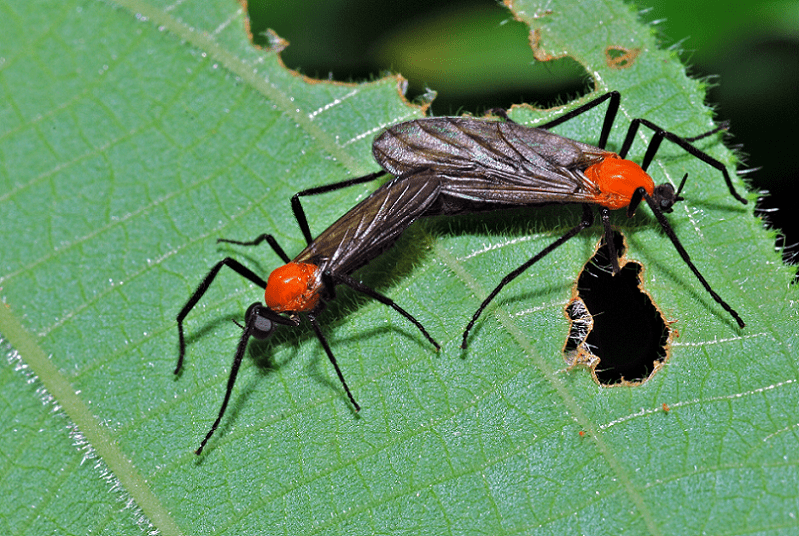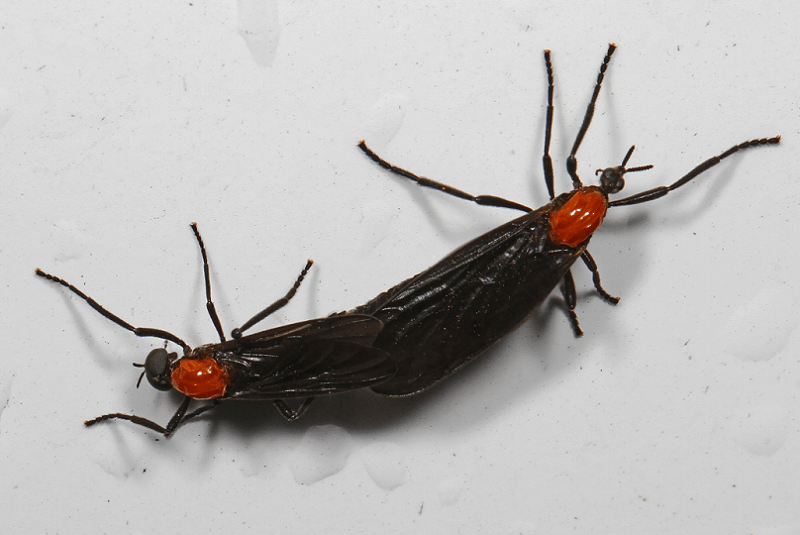Lovebug Facts
- The surprisingly fascinating invertebrate known as the Lovebug represents a species of march fly. It is also commonly called the double-headed bug, for the obvious reason.
- Both of its names derive from its rather protracted mating habits. After mating, both individuals will remain coupled for as long as several days. The aptly named Lovebug maintain this joining even during flight.
- Unlike the majority of species, this small insect actually appears to be expanding its zone of habitation.
- While this insect does not fly in swarms, it does, however, frequently gather on the ground or on trees and bushes by the thousands.
Lovebug Physical Description
The Lovebug remains a physically small species, rarely exceeding 0.35 in (9 mm) in length. While both genders average roughly the same length, sexual dimorphism is displayed.
Females often weigh more than twice as much as the males. The majority of this difference in weight occurs due to the greatly oversized ovaries of the female.
Its head, wings, and the majority of the body display a deep black color. Yet a small portion of the thorax directly behind the head often displays a bright red color.
- Kingdom: Animalia
- Phylum: Arthropoda
- Class: Insecta
- Order: Diptera
- Family: Bibionidae
- Genus: Plecia
- Species: P. nearctica
Lovebug Distribution, Habitat, and Ecology
The adult Lovebug constitutes a small flying insect common in portions of Central America and the southeastern United States. In the U.S., it predominantly appears to be present along the Gulf Coast, in North America.
However, it even occurs as far north as Wilmington, North Carolina.
The insect has a lifespan of 4-9 months during which the species may undertake two massed flights per year. These flights typically occur in April-May, and August-September, and usually last for 4-5 weeks.
During that time, the swarms sometimes number in the hundreds of thousands, creating serious traffic hazards.
Interestingly, the adult stage of the Lovebug lasts for only 5-7 days.
Females lay as many as 350 eggs and the larvae feed exclusively on decaying matter. The larval stage habitually lasts 120 days. Following that is a short pupal stage, averaging 7-9 days.
Males mature to adults first. Once the females emerge as adults, the mating cycle immediately commences again.
There is no time to waste.
Check out our other articles on 4 Magnificent Colorado Mammals, Dakota Skipper, Christmas Beetle, Rainbow Leaf Beetle, Balsam Fir, Frog Legged Beetle, Wheel Bug, Black Caiman












Leave a Reply